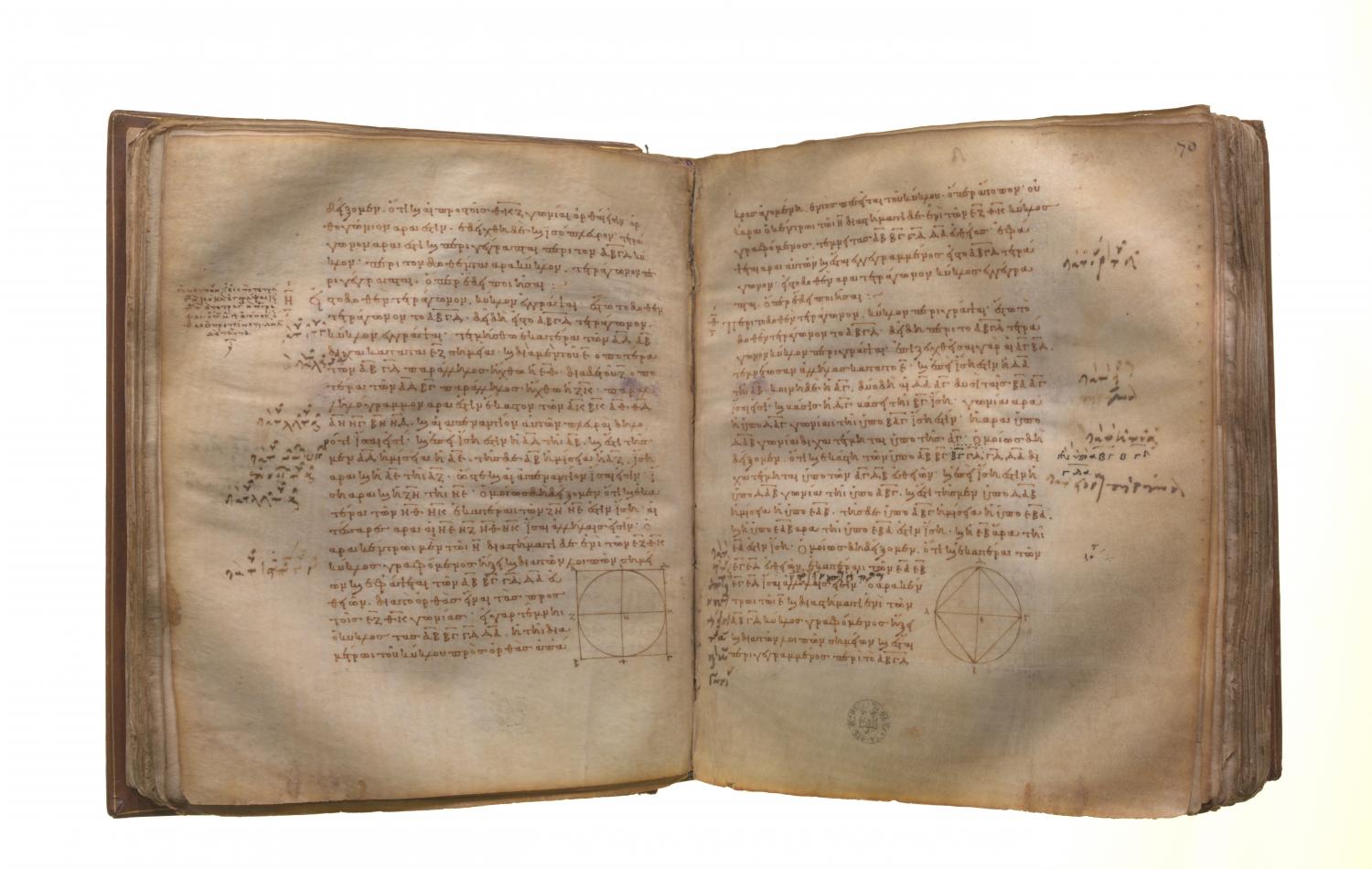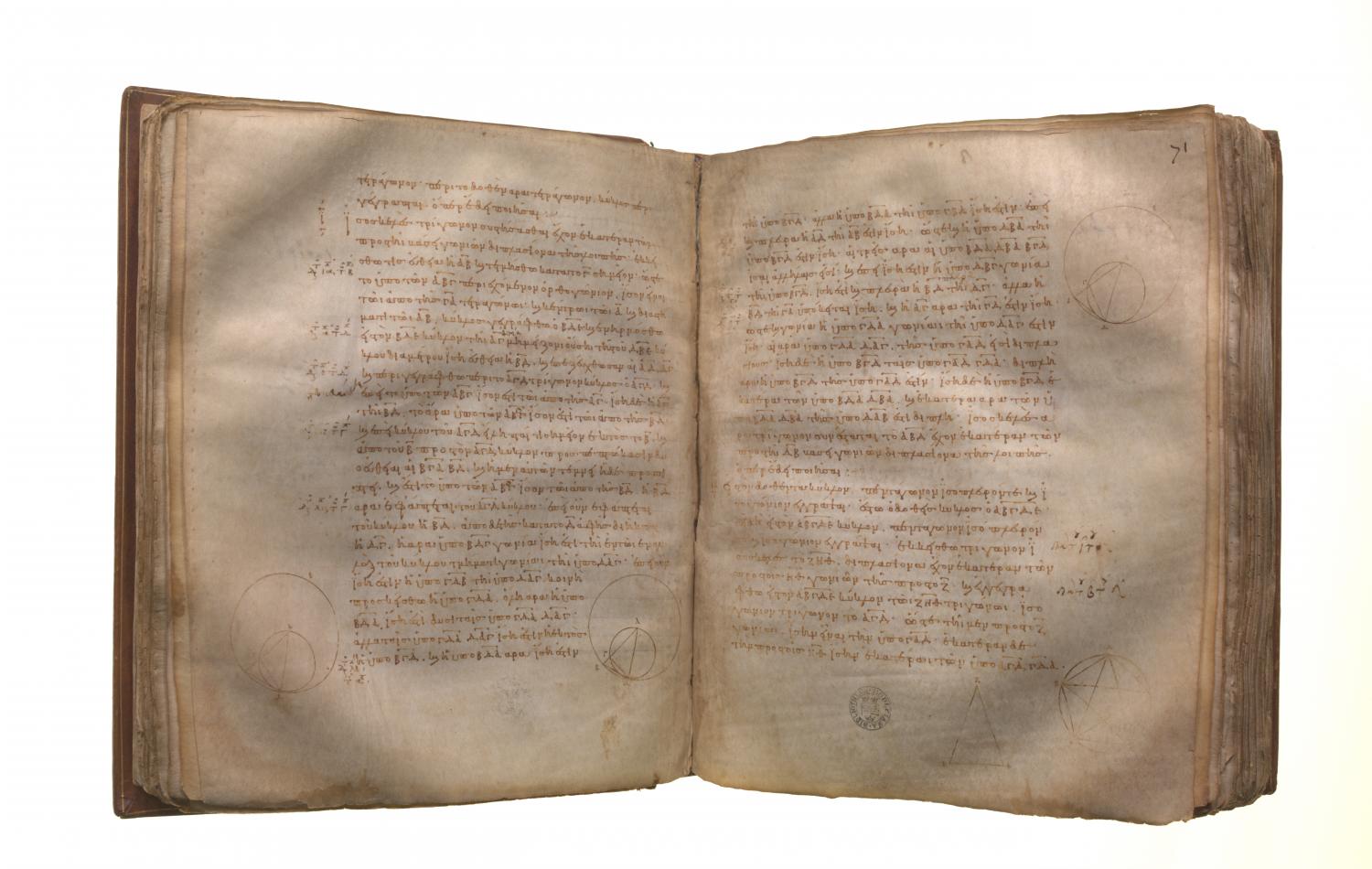Constructions for inscribed and circumscribed figures: Book 4 Proposition 9
Translations
About a given square to circumscribe a circle. Let ABCD be the given square; thus it is required to circumscribe a circle about the square ABCD. For let AC, BD be joined, and let them cut one another at E. Then, since DA is equal to AB, and AC is common, therefore the two sides DA, AC are equal to the two sides BA, AC; and the base DC is equal to the base BC; therefore the angle DAC is equal to the angle BAC. [I. 8] Therefore the angle DAB is bisected by AC. Similarly we can prove that each of the angles ABC, BCD, CDA is bisected by the straight lines AC, DB. Now, since the angle DAB is equal to the angle ABC, and the angle EAB is half the angle DAB, and the angle EBA half the angle ABC, therefore the angle EAB is also equal to the angle EBA; so that the side EA is also equal to EB. [I. 6] Similarly we can prove that each of the straight lines EA, EB is equal to each of the straight lines EC, ED. Therefore the four straight lines EA, EB, EC, ED are equal to one another. Therefore the circle described with centre E and distance one of the straight lines EA, EB, EC, ED will pass also through the remaining points; and it will have been circumscribed about the square ABCD. Let it be circumscribed, as ABCD.

